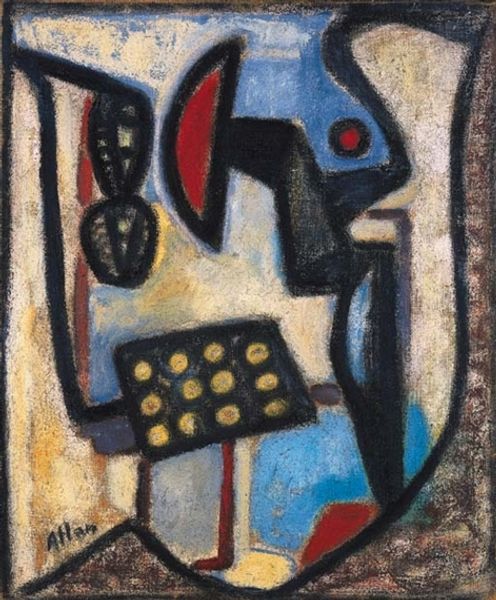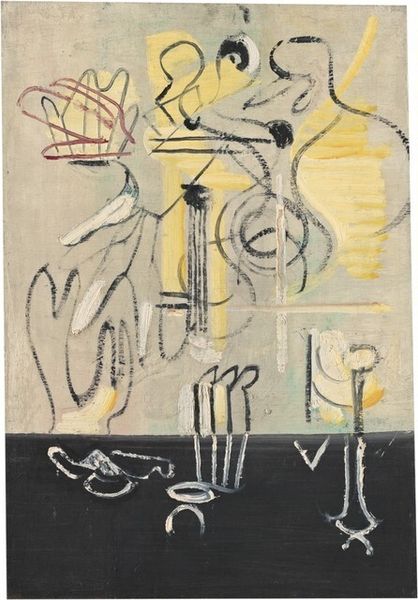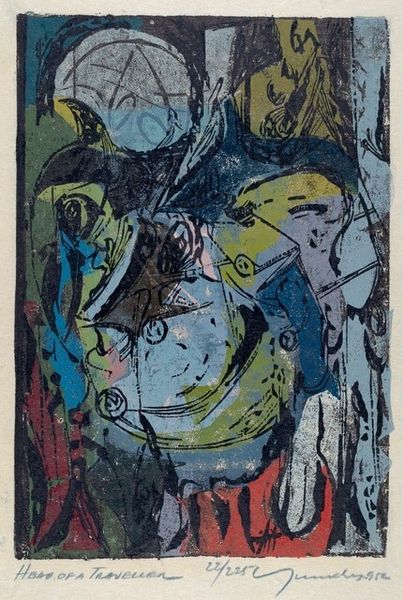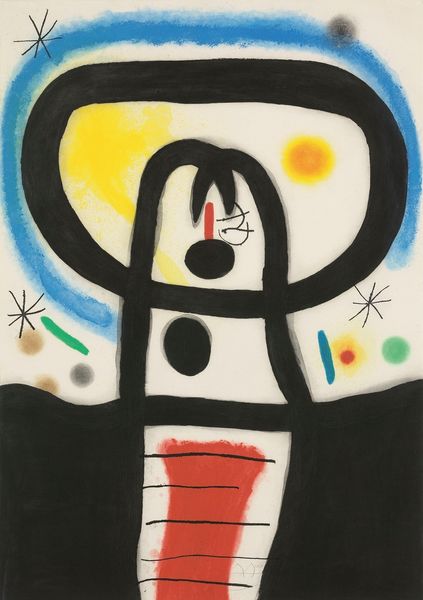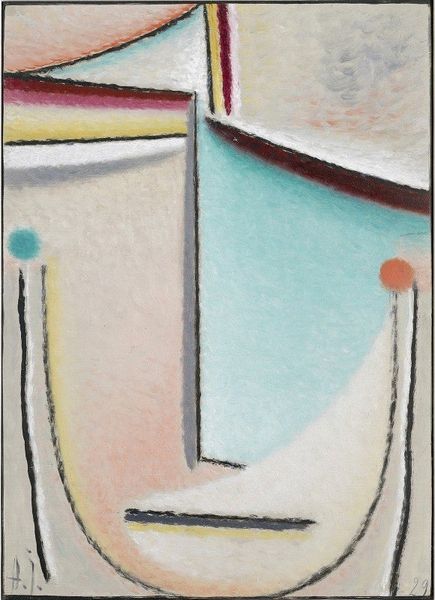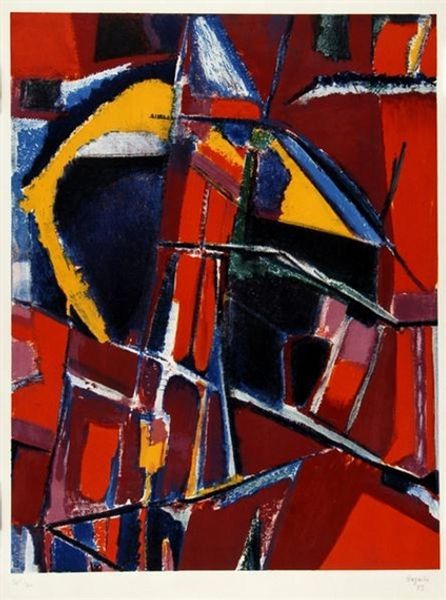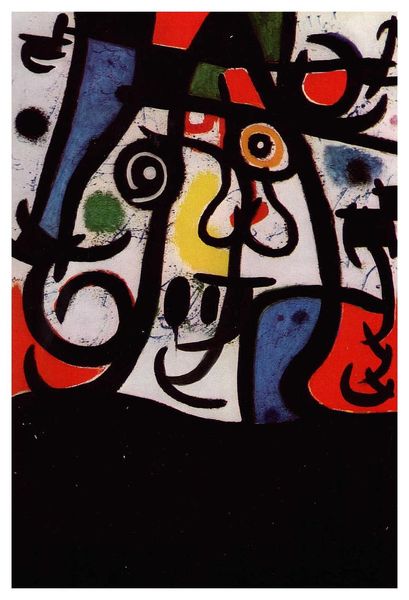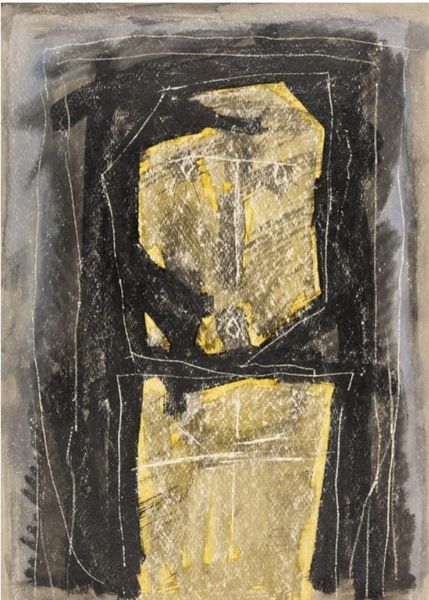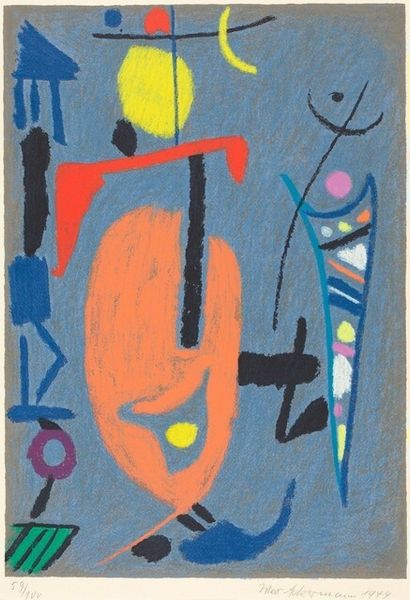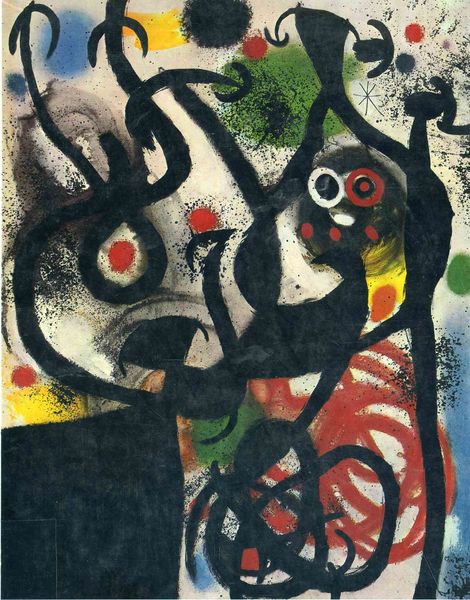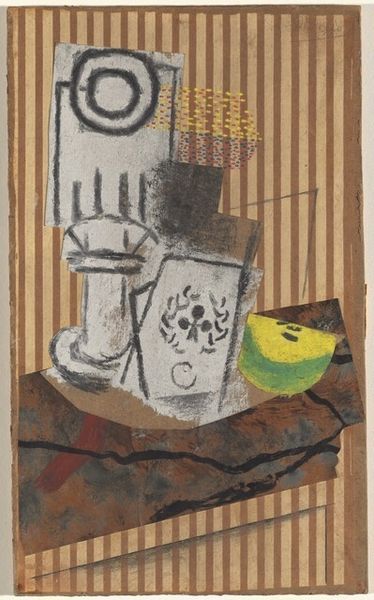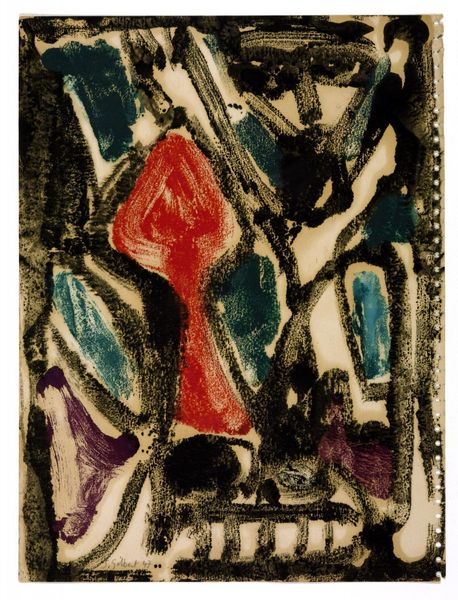
painting, oil-paint
#
cubism
#
painting
#
oil-paint
#
figuration
#
geometric
#
abstraction
#
line
#
modernism
Dimensions: 44.4 x 21.6 cm
Copyright: Public domain
Curator: Arshile Gorky's "The Barber (Composition No. 5)," painted in 1933, presents a striking exploration of form and line in oil on canvas. What is your immediate reaction to this piece? Editor: Well, right away, it feels a bit like peering into a dream. The shapes are familiar, yet their arrangement is completely unexpected, even unsettling. A geometric figure looming out of a hazy, grey backdrop. Curator: Precisely. The limited color palette and geometric abstraction are significant. Note how Gorky employs geometric forms: triangles, circles, and cones coexisting with more biomorphic shapes. Semiotically, one might read this as a synthesis of the mechanical and the organic. Editor: Absolutely. I love how the jarring colors and angles play off one another. The bright yellow circle against the darks, the bizarre white and violet color. There is so much visual tension in this composition, its captivating. Does the 'barber' title give us some type of framework here? Curator: That's the crux of the piece's intrigue. "Barber" can act as an interpretive key, if not as an obvious subject matter. It provides just a hint of narrative possibility. One could interpret the forms as objects found in a barber's shop, like a stylized shaving brush or a disembodied face, but these clues offer a springboard rather than a definitive answer. Consider the role of displacement and fragmentation common in modernist work. Editor: It’s funny you mention narrative, the entire things has a personality; that dark mass with the triangular torso feels very awkward. What is holding it all together? If not a haircut! Perhaps, we're just catching Gorky on a bad hair day? Curator: That's insightful. Your interpretation gestures towards the artist’s unique fusion of Surrealist automatism with Cubist structure. The painting embodies Gorky's attempt to reconcile subconscious impulses with formal artistic principles. Editor: I agree. It’s an arresting piece. Now I’m thinking about all the art hanging crookedly in my place. Curator: An observation well-aligned with the spirit of modern art! Thank you, these interpretations illuminate facets of Gorky's practice and its legacy in the history of modernism.
Comments
No comments
Be the first to comment and join the conversation on the ultimate creative platform.
